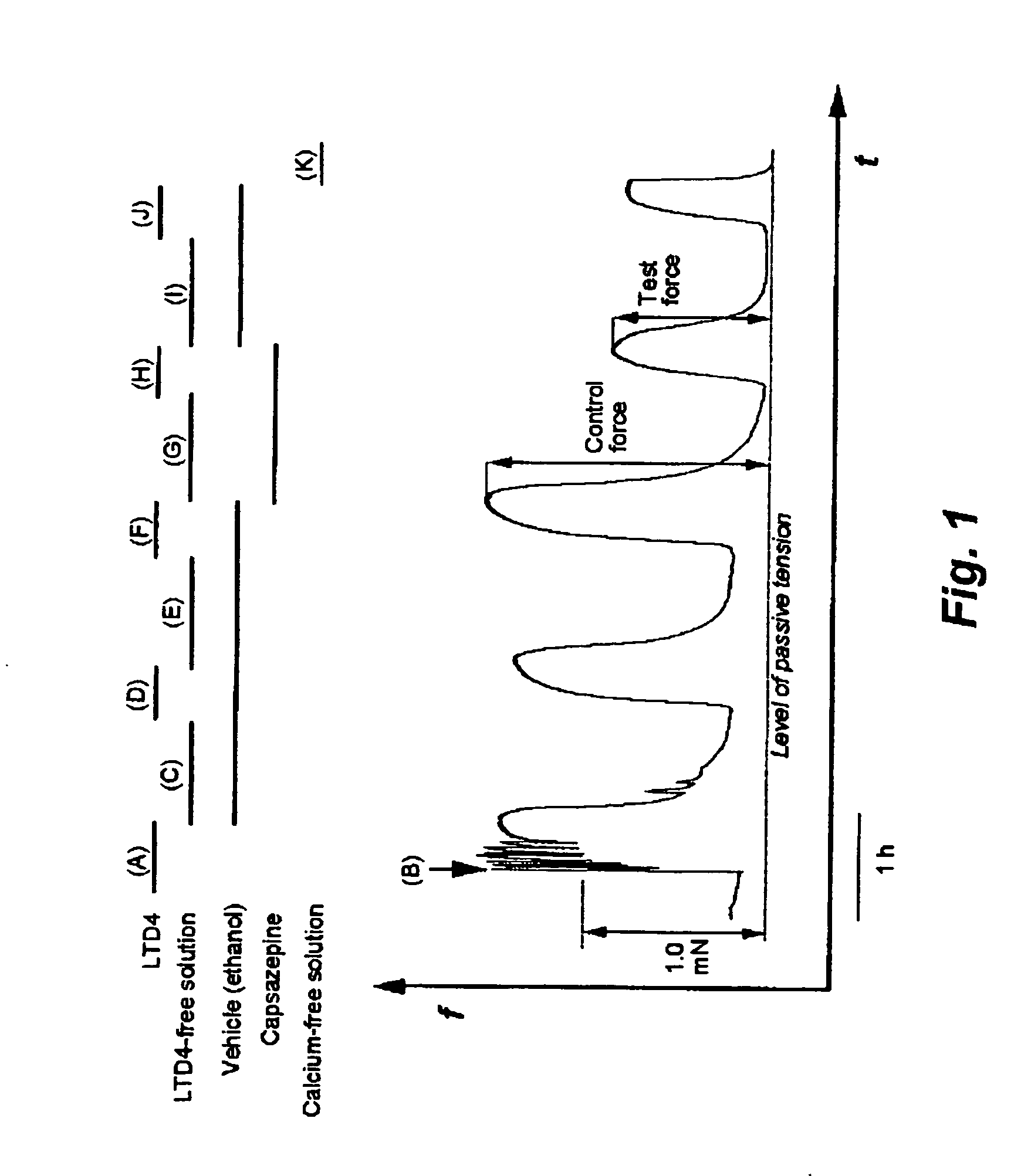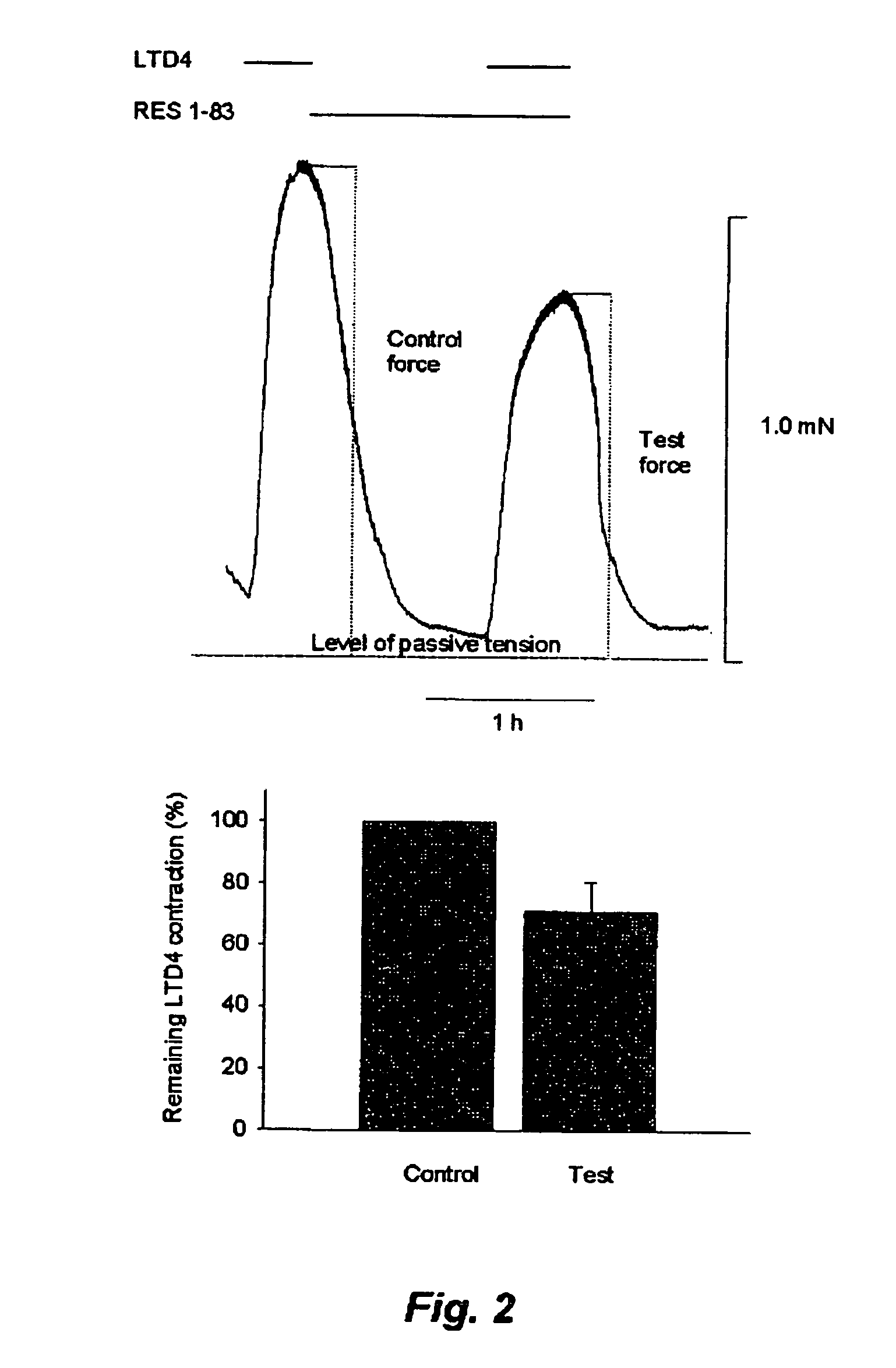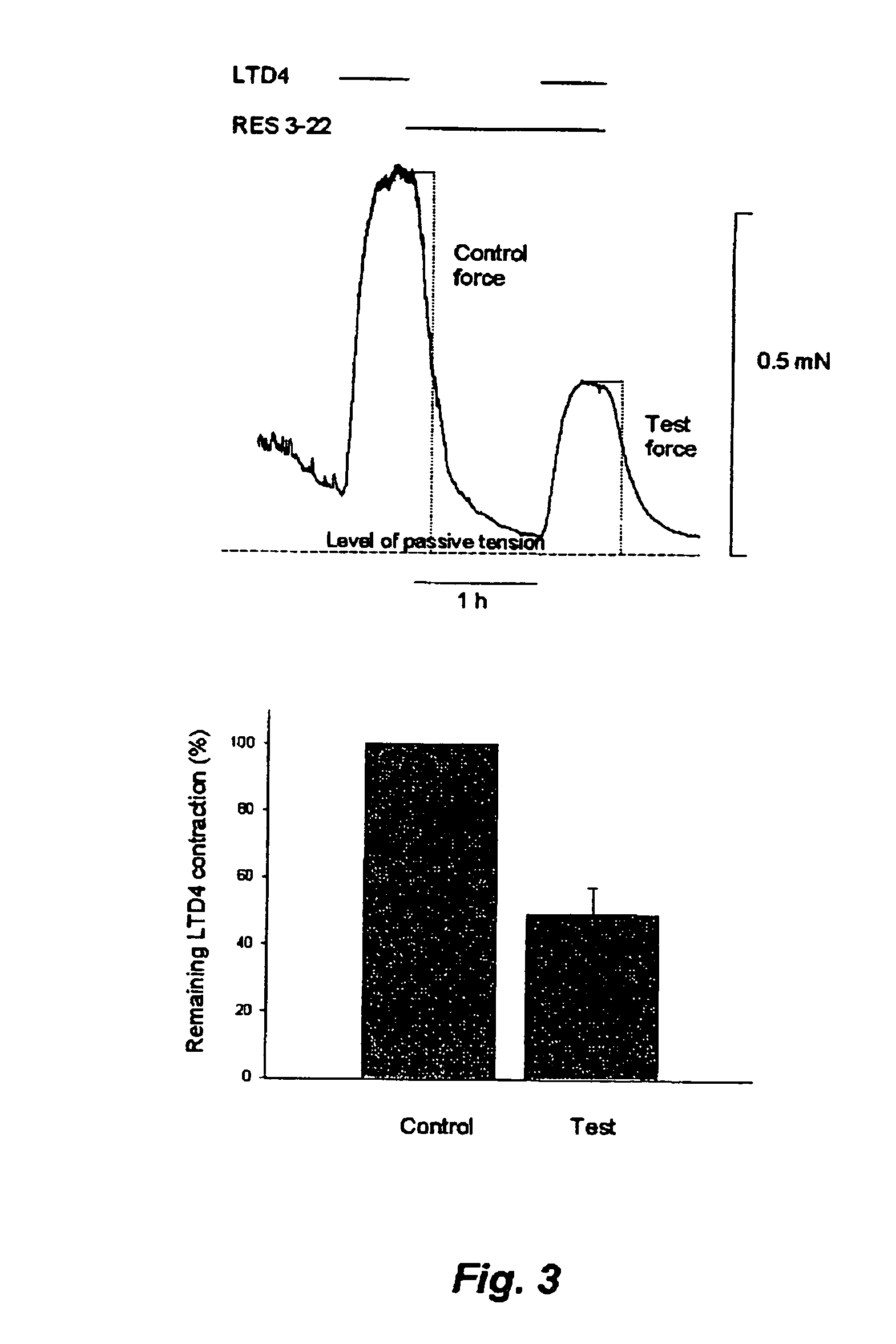Method for identifying bronchoconstriction relaxing substances
a relaxing substance and bronchospasm technology, applied in the field of identifying relaxing substances, can solve the problems of complicated use of human airway preparations, however, and dissuasion of human use of airway preparations
- Summary
- Abstract
- Description
- Claims
- Application Information
AI Technical Summary
Benefits of technology
Problems solved by technology
Method used
Image
Examples
example 1
Test Procedure
[0035] An exemplary test is shown in FIG. 1 in which capital letters indicate interference with the test system. The material for the preparation was a bronchus (inner diameter about 1 mm) from a male occasional smoker (41 yrs) but with the epithelium intact. Adjustment and stretch. After mounting as described above the preparation is allowed to adjust with a low passive tone in the experimental chamber. The composition of the gas is changed to 94% (v / v) of oxygen. After a short adjustment period, PSS with 10 nM LTD4 is added to the experimental chamber upstream of the preparation (A). The preparation is stretched repeatedly (B) until it exerts a contraction force of around 150 mg. When the contraction has levelled off, leukotriene-free solution is administered for 1 hour (C), resulting in a relaxation. A second injection of 10 nM LTD4 (D) makes the preparation return to the tensioned state. At the peak tension leukotriene-free solution is again administered (E). Afte...
example 2
[0039] Three synthetically obtained compounds designated
were tested for broncho-relaxing effect in the test system of Example 1. Relevant sections of the recorded force v. time diagrams are shown in FIGS. 2 to 4. LTD4 was used as a broncho-contracting agent. The three compounds were all found to exhibit a broncho-contracting effect. In comparison to capsazepine (FIG. 1)
RES 1-83 (FIG. 2) was found to be a substantially less effective, compound RES 3-22 to be about equally effective, and compound RES 5-21 to be substantially more effective in relaxing broncho-constriction.
PUM
| Property | Measurement | Unit |
|---|---|---|
| Time | aaaaa | aaaaa |
| Mass | aaaaa | aaaaa |
| Mass | aaaaa | aaaaa |
Abstract
Description
Claims
Application Information
 Login to View More
Login to View More - R&D
- Intellectual Property
- Life Sciences
- Materials
- Tech Scout
- Unparalleled Data Quality
- Higher Quality Content
- 60% Fewer Hallucinations
Browse by: Latest US Patents, China's latest patents, Technical Efficacy Thesaurus, Application Domain, Technology Topic, Popular Technical Reports.
© 2025 PatSnap. All rights reserved.Legal|Privacy policy|Modern Slavery Act Transparency Statement|Sitemap|About US| Contact US: help@patsnap.com



